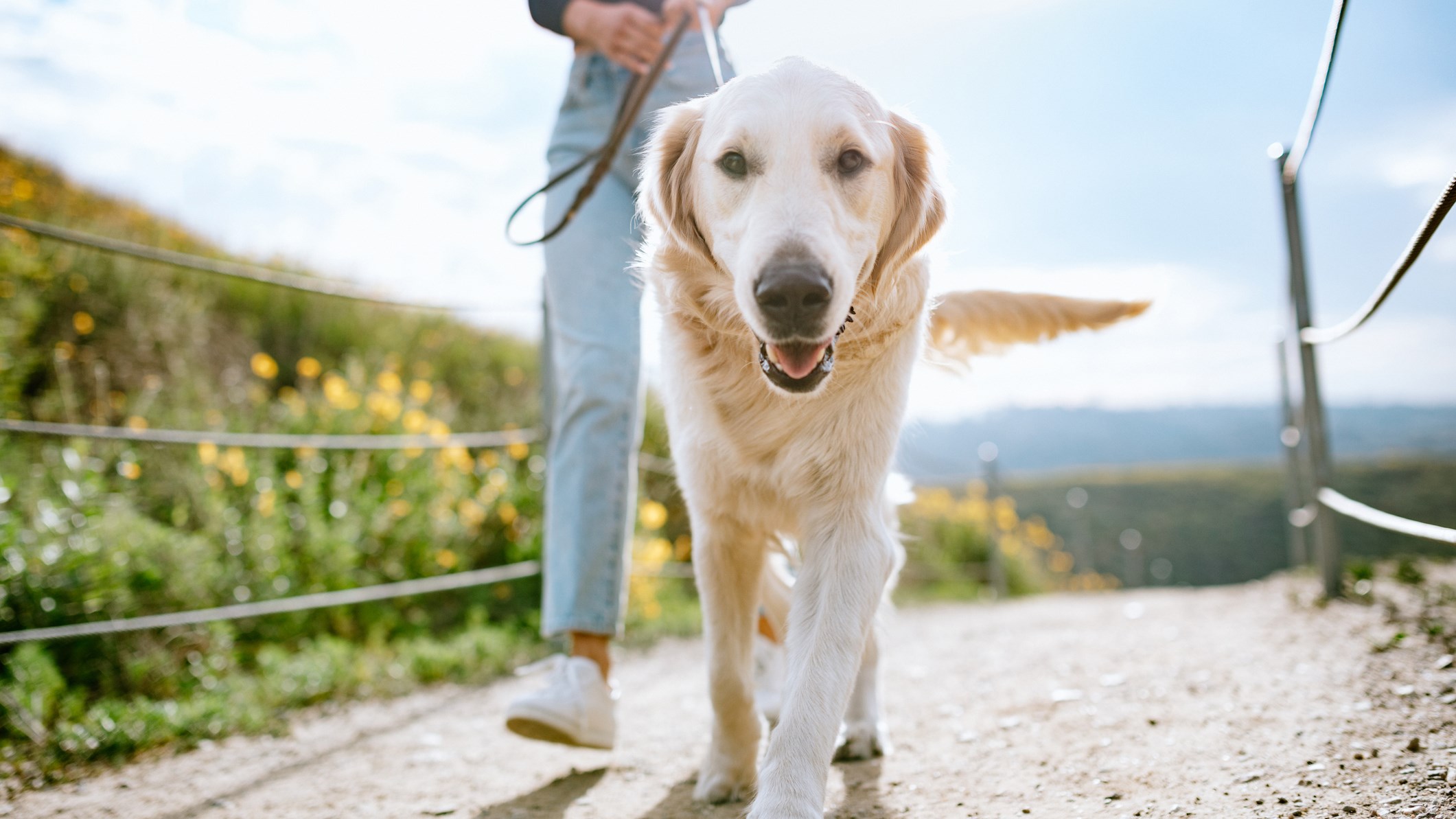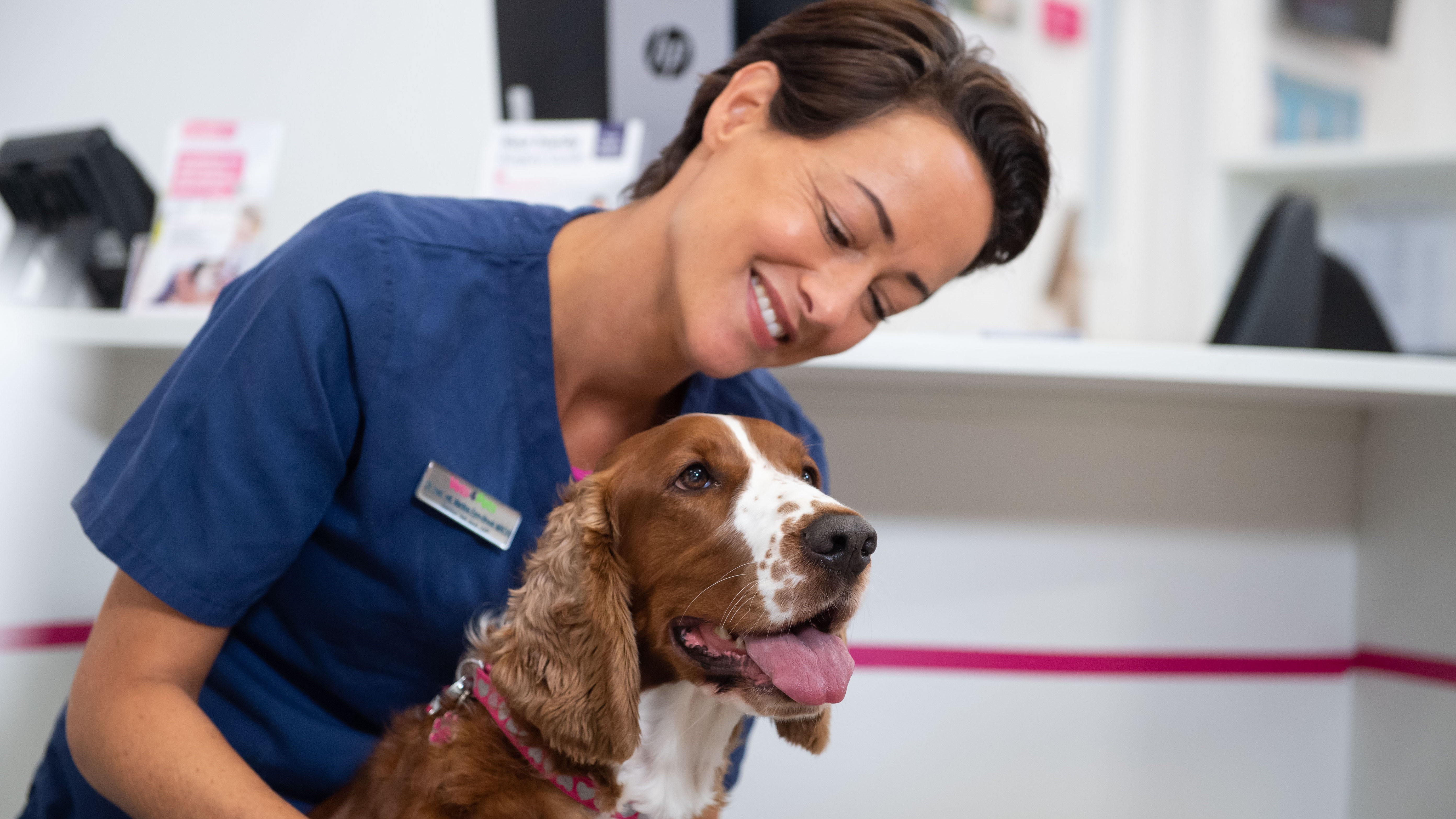
How to prevent burnt dog paws
In hotter weather, it is possible for dogs to burn their dog paws by walking on hot pavements. We can help prevent this with things like the hot pavement test.
Dogs are excitable and love a walk any time of year, but they won't always consider the ground too hot until it's too late. Hot surfaces can burn our dog's paws in the summer. To be a responsible owner and keep your dog safe in the summer, we must walk our dogs during cooler periods of the day, for example, early in the morning or later in the evening when temperatures are much lower.
If your dog has burnt their paws then contact your local vet immediately.
Information on burnt dog paws
If your dog has burnt pads from walking on hot surfaces, you may not be able to see the burns straightaway. However, your dog may seem uncomfortable, they may be lame, or they may lick at their paws or become upset if you try to look at them. After a short time, the surface of the pads often starts to look patchy and you might even see pink blisters or areas of inflammation in dogs with pale pads. The tough, outer surface of the pads then dies off and you’ll see flaps of skin start to peel or lift away from the pads, leaving a soft under-layer.
Walking dogs in hot weather can be dangerous, which is why it's best to try the hot pavement test before a walk. If you can't hold your hand on the hot pavement for longer than five seconds, it is too hot for your dogs to walk on.
Leave walks to the early morning and late evening to keep your dog cool on a walk, and make sure to pack a water bottle so your dogs can drink occasionally. If you are concerned about your pet in the heat, contact your local practice as soon as possible.
Contact your vet for advice if you can see any signs that your dog has burnt their pads. If your vet recommends that you take your dog in to have their injuries checked, don’t walk there, as this would lead to further damage and pain. Instead, drive or carry your dog there, as appropriate.
Your vet may treat your dog’s burnt pads in the same way as sunburn and they may advise that your dog wears dressings or dog boots until their pads have healed. During their recovery, keep your dog on cool, comfortable surfaces and keep their wounds clean. It takes a while for the soft, underlying tissue to adapt and perform the job needed for the surface of the pads.
Although your dog’s pads are quite tough, they are susceptible to getting burnt if they’re exposed to extreme temperatures. If your dog walks on a hot surface, such as a pavement on a very sunny day, or on ice during the winter, their pads may get injured. It’s also possible for your dog’s pads to get burnt by exposure to chemicals, including some cleaning products, so if you think your dog’s pads look damaged, always reach out to your vet for advice, even if you can’t see how they could have got burnt.
When a pavement is too hot for you to walk along comfortably with bare feet, it’s too hot for your dog’s paws. If you need to take your dog out in hot conditions, keep them to cooler surfaces, such as grass or shaded tracks. In extreme conditions in the winter, you could consider using boots to protect your dog’s paws.
Health Plans to keep your dog healthy
At Vets4Pets we offer a range of Health Plans that make essential routine treatments more affordable. You'll save money on things like annual vaccinations, flea and worm treatment and routine health check-ups.

Dog Advice
Read more of our expert dog advice to keep your dog happy and healthy.
